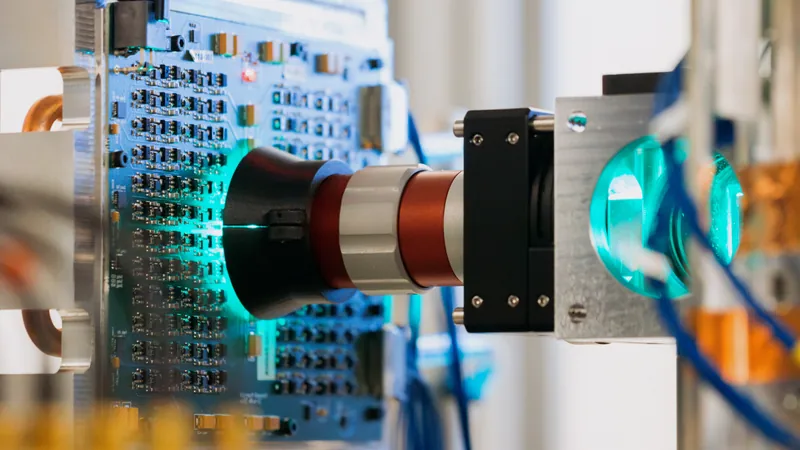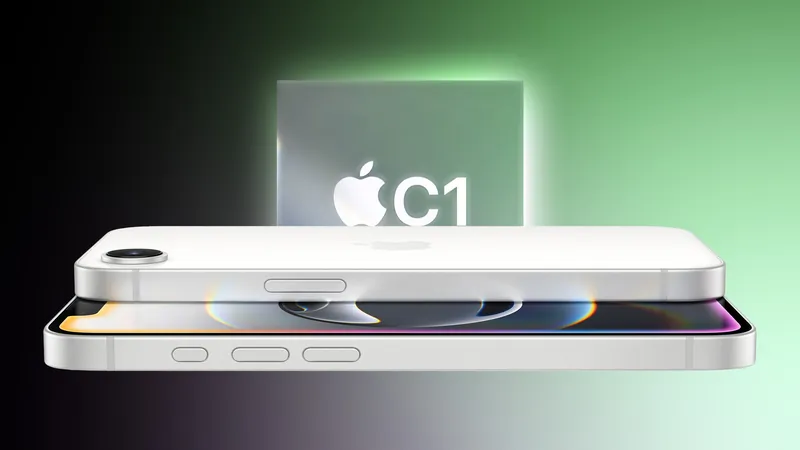
Revolutionary Light-Based Computer from Microsoft Could Make AI 100 Times More Efficient!
2025-09-09
Author: Ting
A Bright Leap into the Future of Computing
Imagine a computer that harnesses the power of light to boost artificial intelligence efficiency dramatically! Microsoft researchers have unveiled a groundbreaking prototype known as the Analog Optical Computer (AOC), promising to revolutionize how we compute and tackle energy demands.
Harnessing the Past for a Brighter Future
Drawing inspiration from nearly 80-year-old technology, this innovative system operates not through traditional digital switches, but via light and varying voltages. According to a study published in the prestigious journal Nature, the AOC could reshape computational tasks—solving problems significantly faster and with far lower energy consumption than today’s digital machines.
Jannes Gladrow, a co-author of the study and AI researcher at Microsoft, enthused, "We estimate around a hundred times improvement in energy efficiency. That alone is unheard of in hardware!" This level of efficiency could change the game for AI applications.
How Does It Work?
The AOC employs micro-LEDs and camera sensors, performing calculations through an elegant feedback loop that iteratively refines answers. Unlike conventional computers that flip billions of switches, the AOC utilizes light to continuously add and multiply numbers until it arrives at a steady state or final answer.
This energy-saving, analog approach allows the AOC to bypass some inherent speed limitations of digital computing.
Potential Beyond Digital Horizons
Not just a novelty, the AOC is designed as a special-purpose tool—a "steady-state finder" specifically for certain AI and optimization challenges. Aydogan Ozcan, an optical computing expert at UCLA, noted in an email to Live Science that while it may not be a general-purpose computer, its performance for designated tasks could significantly surpass digital counterparts.
The Digital Twin Innovations
In an exciting twist, researchers created a "digital twin" of the AOC. This model allows them to simulate larger, more complex problems that the physical prototype can't currently manage. Michael Hansen from Microsoft Health Futures explained that this advancement enables researchers to tackle challenges well beyond the AOC’s immediate capabilities.
Tested, Trusted, and Ready for the Next Leap
In initial tests, the AOC successfully handled basic machine learning tasks, classifying images on par with digital systems. Yet, as they scale up to larger versions with more micro-LEDs, their potential for unparalleled energy efficiency could revolutionize the landscape of AI.
In one notable experiment, researchers reconstructed a 320-by-320-pixel brain scan using only 62.5% of the original data, hinting at potential advancements in MRI technology that could drastically cut scanning times.
The AOC also tackled complex financial problems, efficiently optimizing fund exchanges across multiple groups with a higher success rate than existing quantum computers—a feat that could reshape daily operations for financial institutions.
The Future is Light!
While the AOC is still in prototype form, its implications are staggering. With further development, these light-based machines may soon compute with millions or billions of variables, paving the way for a new era of AI efficiency and capability.

 Brasil (PT)
Brasil (PT)
 Canada (EN)
Canada (EN)
 Chile (ES)
Chile (ES)
 Česko (CS)
Česko (CS)
 대한민국 (KO)
대한민국 (KO)
 España (ES)
España (ES)
 France (FR)
France (FR)
 Hong Kong (EN)
Hong Kong (EN)
 Italia (IT)
Italia (IT)
 日本 (JA)
日本 (JA)
 Magyarország (HU)
Magyarország (HU)
 Norge (NO)
Norge (NO)
 Polska (PL)
Polska (PL)
 Schweiz (DE)
Schweiz (DE)
 Singapore (EN)
Singapore (EN)
 Sverige (SV)
Sverige (SV)
 Suomi (FI)
Suomi (FI)
 Türkiye (TR)
Türkiye (TR)
 الإمارات العربية المتحدة (AR)
الإمارات العربية المتحدة (AR)